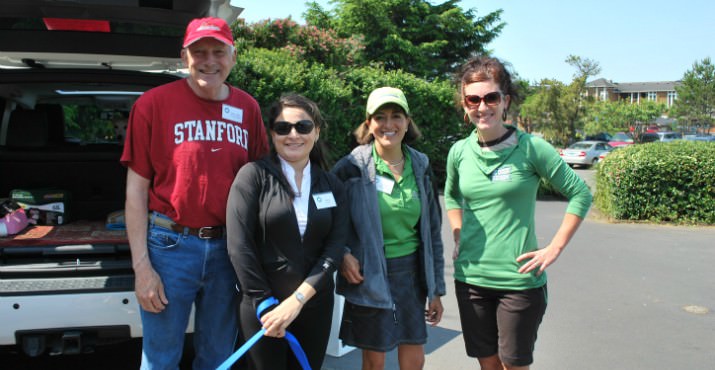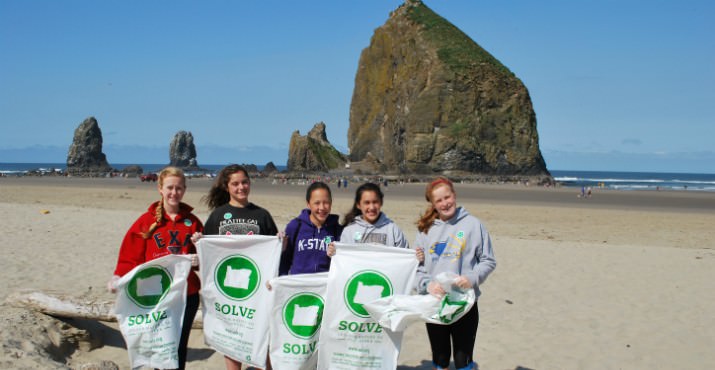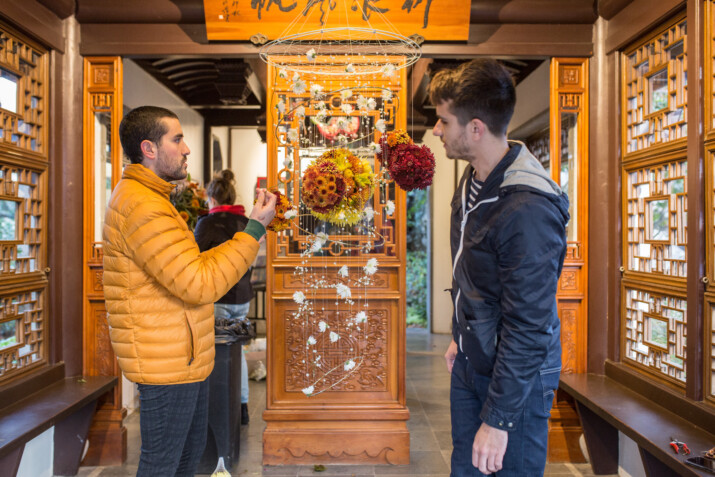Cannon Beach, July 7th. SOLVE organized an extra beach clean-up this summer to pick up garbage and any debris washing up on Oregon beaches from the 2011 Japanese Tsunami. 109 volunteers collected 850 pounds of debris including a very large Styrofoam cylinder. No hazardous waste was reported. SOLVE is helping clear any tsunami debris found by working with the Oregon Tsunami Debris Task Force. Oregon Parks and Recreation has established 32 drop-offs locations for debris collected on the beach. Debris dropped off at the collection locations must be in official SOLVE bags, which can be picked up at any state park or transfer station in an Oregon coastal county.

Bob Mushen and Carla Moya are SOLVE and City of Cannon Beach volunteers, Jenee Pearce-Mushen is the SOLVE Captain of Cannon Beach volunteers and Director at Pacific Alarm Systems. Charilyn Vantassel is with OBRC

Volunteers Allison and Tess Kehoe, from the National Charity League, Inc., were two of the more than 100 SOLVE volunteers.

Fish, birds, and other aquatic life can mistake small bits of trash for food. This trash travels through the digestive system often resulting in malnutrition, entanglement, and strangulation.

Due to the increased use of plastic and other synthetic materials, marine debris is causing increasing damage to ocean ecosystems and wildlife. Scientists estimate that more than 5 million square miles of the Pacific Ocean is covered with trash, and most of it is believed to be made up of plastic remnants from the world’s shorelines.
SOLVE is working with the Oregon Tsunami Debris Task Force which includes representatives of State Police, Parks, Environmental Quality, Fish and Wildlife, Public Health, Transportation and the Marine Board, as well as local and tribal governments, state legislators, community organizations, and federal agencies.
- Pickup trash along the beach the next time you visit the beach. Bags are available at every state park and transfer station along the Oregon coast. Full bags can be left at beach debris drop-off points.
- Organize a beach cleanup with SOLVE through the Project Oregon program.
- Sign up to volunteer for ongoing beach cleanup efforts.
- Learn more about Tsunami Debris by visiting the Oregon Parks and Recreation Webpage.
- Learn more about the impact of litter and marine debris on wildlife and water quality by clicking here.
- Support SOLVE’s ongoing efforts to keep Oregon beautiful and healthy, make a donation today.




















Solve is amazing!